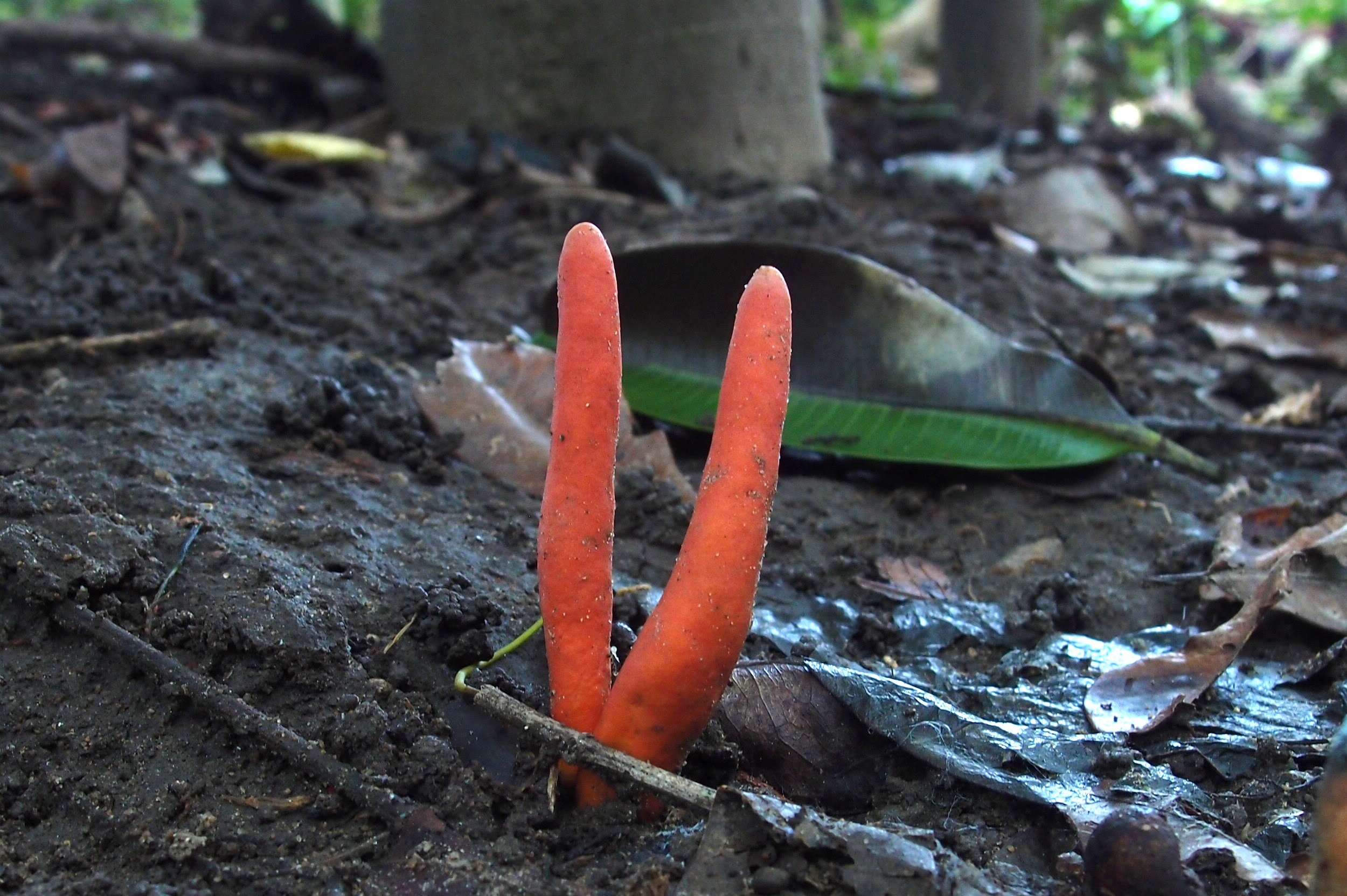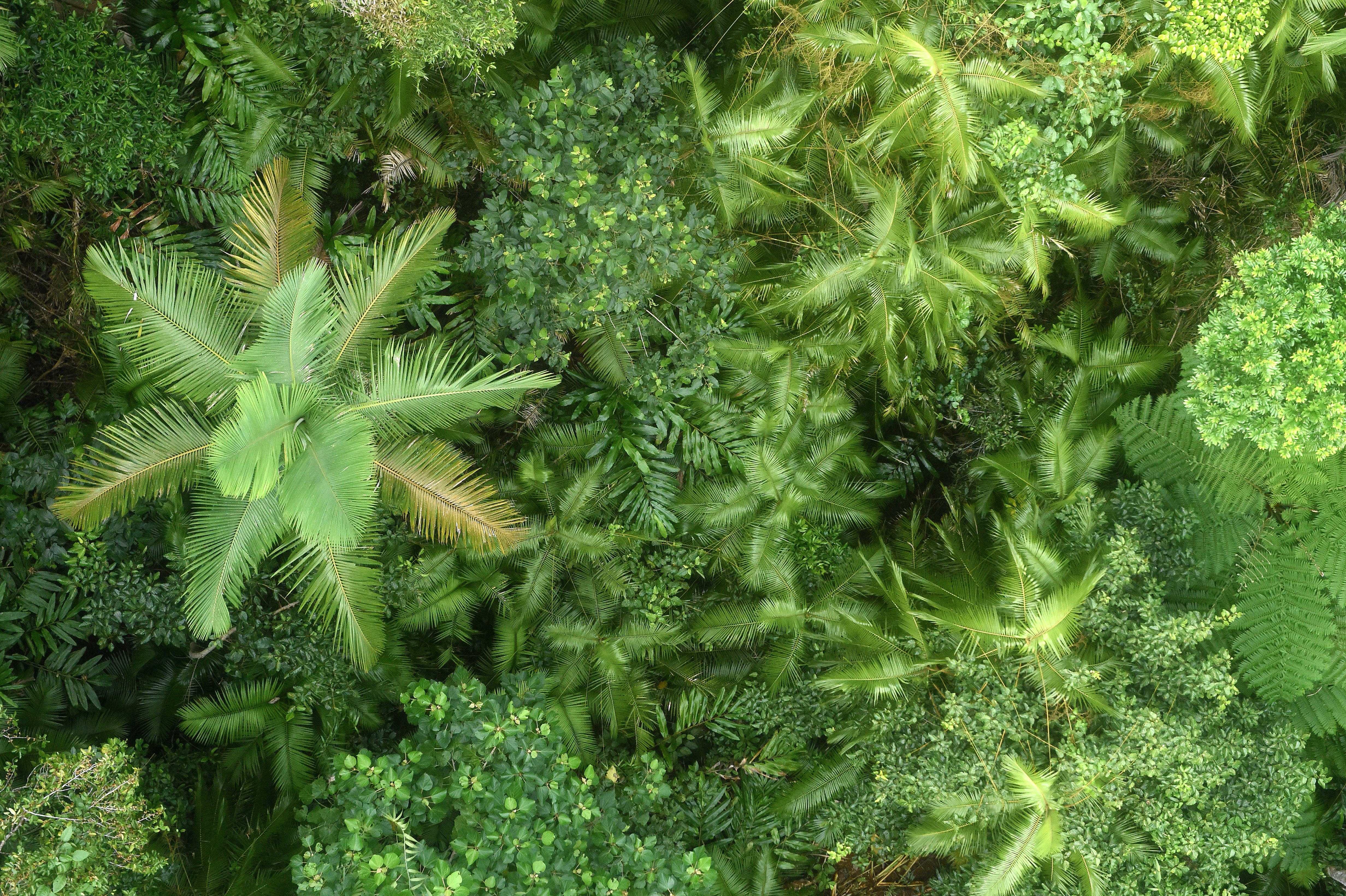One of the world's deadliest fungus has been discovered growing in Far North Queensland, far from its native Japan and Korea.
The bright red poison fire coral fungus was found growing on tree roots by Redlynch fungus photographer Ray Palmer while exploring near Cairns.
Several people have died in Japan and Korea after accidentally consuming the hornlike fungus, which can shrink a person's brain and cause multiple organ failure. James Cook University confirmed it was the first record of the species found in Australia.
James Cook University confirmed it was the first record of the species found in Australia.

People are warned not to touch the poison fire coral which has been detected growing in Australia for the first time. Source: Supplied: Ray Palmer
Dr Matt Barrett, a mycologist at JCU's Australian Tropical Herbarium in Cairns, warned people to avoid touching the eye-catching fungus, which is the only one known to have toxins that can be absorbed through the skin.
"It has a suite of chemicals in it that are particularly toxic to most forms of life," he said.
Dr Barrett said it was not known why it was so poisonous.
"It could be to ward off other pathogenic fungi or prevent predation by insects, but they just happen to be very deadly to humans."
Retiree and self-described "fungus fanatic" Ray Palmer was exploring a patch of the rainforest near his home in April when he spotted the distinctive fungus.
Recognising the danger, he carefully collected a sample.
"I wasn't expecting to find them, I was just out photographing some other fungus, so I just picked up some forest leaves... and using the leaves like a glove, put them into a container and took them along to Matt."
Dr Barrett ran DNA tests to confirm the discovery.
It's not the first time Mr Palmer has helped discover a new fungus growing in Australia since he began documenting specimens in the local area.
"They vary from grotesque to beautiful, you never know what you're going to find. It's like a little treasure hunt."
Dr Barrett said there had been reports of the fungus growing in Papua New Guinea and Indonesia, but it had never before been found in Australia. It is very likely the spores were spread by the wind.
It is very likely the spores were spread by the wind.

Far North Queensland's rainforests are the perfect environment for fungi. Source: AAP
"We think it's been here a very long time, but has only recently been detected. We don't know very much about our fungi in Australia. There hasn't been nearly enough people going out looking, making a collection."
Several people have died in Japan and Korea after mistaking the deadly fungus for edible varieties and brewing it in tea used for traditional medicine.
The poison fire coral produces at least eight toxic compounds and just touching the fungus can cause reddening or swelling of the skin.
"If eaten, it causes a horrifying array of symptoms: initially stomach pain, vomiting, diarrhoea, fever and numbness, followed over hours or days by delamination of skin on face, hands and feet, and shrinking of the brain, which, in turn, causes altered perception, motion difficulties and speech impediments," Dr Barrett said.
If left untreated, death can occur from multiple organ failure or brain nerve dysfunction.
The Poison Fire Coral is just one of more than 20 fungi species Dr Barrett has identified that were not previously documented in northern Queensland.
"The fact that we can find such a distinctive and medically important fungus-like poison fire coral right in our backyard shows we have much to learn about fungi in northern Australia," said Dr Barrett.
With additional reporting from AAP


